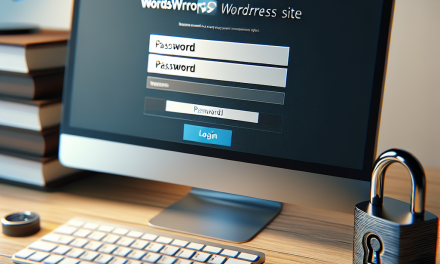Managing user roles in WordPress is a vital aspect of maintaining your website’s security and functionality. By effectively managing user roles, you not only secure your website from unauthorized users but also streamline your team’s workflow. In this article, we will explore best practices for managing user roles in WordPress, helping you to maximize the efficiency and safety of your site.
Understanding User Roles in WordPress
WordPress comes with predefined user roles, each with specific capabilities. The default roles include:
- Administrator: Has full control over the site and can manage all aspects, from content to user management.
- Editor: Can publish and manage posts, including those of other users.
- Author: Can publish and manage their own posts but cannot edit others’ posts.
- Contributor: Can write and manage their own posts but cannot publish them.
- Subscriber: Can manage their profile and read content.
For more details on these roles and their capabilities, check the official WordPress documentation on User Roles and Capabilities.
Best Practices for Managing User Roles
-
Limit User Access: Only assign the necessary user roles based on the tasks they need to perform. This helps in minimizing the risk of unauthorized changes or security breaches.
-
Regularly Review User Roles: Periodically check who has access to your site and adjust roles as needed. Remove users who no longer require access, and modify roles for users whose responsibilities may have changed.
-
Utilize Role Management Plugins: Consider using plugins such as User Role Editor or Members to streamline role management. These plugins allow you to customize and create user roles with specific capabilities tailored to your site’s needs.
-
Implement Two-Factor Authentication: Enhance security by implementing two-factor authentication, particularly for administrators and editors. This adds an extra layer of security, making it harder for unauthorized individuals to gain access.
-
Educate Your Team: Ensure that your team understands the significance of their roles and responsibilities. Offer training on how to effectively use the WordPress admin interface and the implications of their assigned roles.
-
Backup User Role Information: Regularly back up your WordPress site, including user roles and capabilities. This ensures that you can restore permissions if anything goes wrong. Plugins like UpdraftPlus can simplify this process.
-
Audit User Activity: Use security plugins like WP Activity Log to keep track of user activities. Auditing actions can help you identify any unusual behavior and take necessary actions swiftly.
- Test Before Making Changes: Before implementing changes to user roles or capabilities, test them on a staging environment. This prevents accidental issues on your live site.
Conclusion
Managing user roles effectively is crucial for the security and functionality of your WordPress site. By following these best practices, you can ensure that your website remains secure and that team members can carry out their responsibilities effectively.
Call to Action
Are you looking for a hassle-free WordPress hosting experience that makes managing user roles and other technical aspects easier? Discover WafaTech’s NextGen WordPress Hosting solutions. With top-notch performance and security features, WafaTech is designed to meet all your hosting needs. Learn more about our services here.
By implementing best practices in user role management and leveraging reliable hosting solutions, you can ensure your WordPress site runs smoothly and securely!





